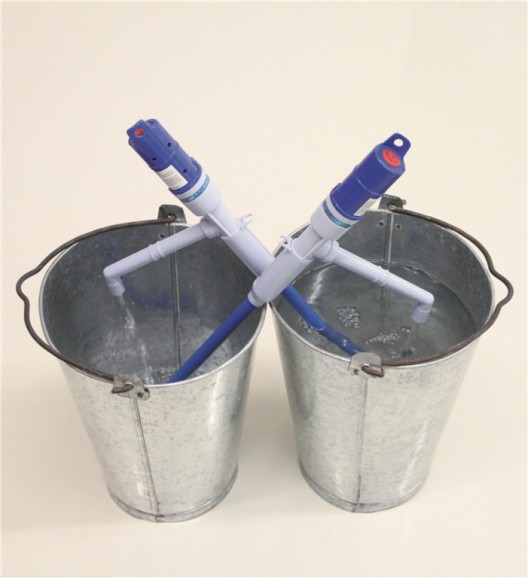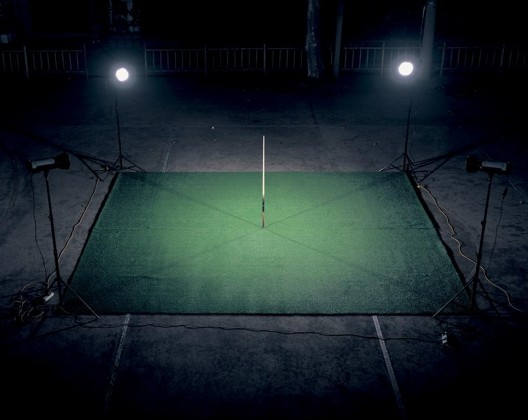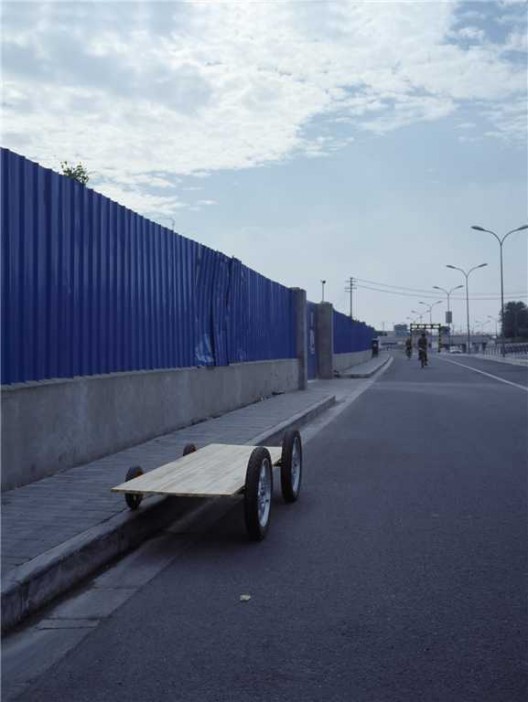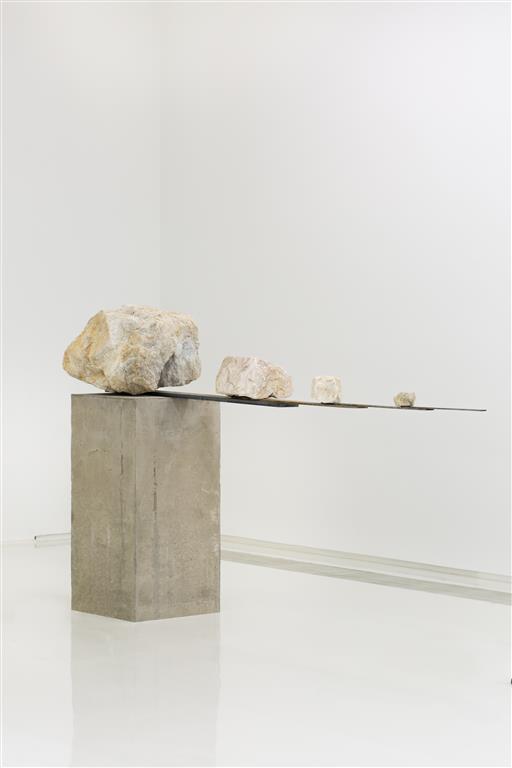This piece is included in Ran Dian’s print magazine, issue 3 (Spring 2016)
My understanding of Liao Fei’s work began with a conversation at his studio in Taopu, Shanghai. It was past nine o’clock in the evening, and we met in haste. I vaguely remember his somewhat messy studio; an artwork depicting two light tubes pieced together was on the floor, as was a small four-wheeled trolley with two sets of wheels, two large and two small. I also saw his paintings of books without titles. I can’t recall the subject of our conversation, other than that we mentioned a few unrelated figures such as Jean-Jacques Rousseau, René Descartes, and Kurt Gödel. I later found out that they were not just a matter of casual reading for Liao Fei.
The next time I met Liao was half a year later. In between, I saw a few of his friends’ exhibitions, and in my mind I placed him in that category. As for which category exactly, there was no way for me to say clearly. I put in some effort to decipher my own judgments. Liao is that Shanghai, Hangzhou “type” of artist who pays little attention to what happens around him. He reads books and makes artworks in his studio, quietly. He’s somewhat cool and detached, and the issues he talks about seem rather abstract and disconnected from reality. But by making this claim, I’m not really saying anything. It neither explains his work nor positions it suitably from any angle. I am also aware that these rough notions occur in the mind on a daily basis; the things they reference and jumble up together on the inside are complicated. Inevitably, there is both a longing for and a rejection of art history, plus that gloomy and violent judgment of reality and of the knowledge of the self, and excessive imagination as well as indiscernible blindness.

There is a video work by Liao called “Crossroads”. From a vantage point overlooking an intersection, the artist’s camera records how pedestrians cross the road. He has designed a few trajectories completely in accordance with traffic rules and asked actors to walk back and forth accordingly, mixing with people on the street so that we might not be able tell them apart. In Liao’s estimation, when pedestrians cross the street, they more often than not choose the shortest path instinctively, which often leads them to violate traffic rules. The paths the actors took had the same end goal as the other pedestrians—to “get to the other side”—butthey followed the rules fully. In mixing the two together, reason and instinct became inseparable—this is the boundary of cognition. At the end I thought that I must have been in this state of mind when I looked at his works of art.
In an email, Liao wrote, “The major factor that drives my practice is existential bewilderment about the self and the outside world. There isn’t a true and sufficiently satisfying explanation for understanding the world today. With the demise of an individual’s life so incredibly close, one inevitably would want to do something, to approach things more. For me, it is a process through which I can relieve the anxiety of existential ignorance. Religion, science, and philosophy are different fields that overlap; their truths in cognizing things are also to be understood within their own parameters. In my view, I am powerless to create something new; instead, I only desire to present what already exists. On this, I partly agree with Heidegger’s claim regarding ‘disclosure’ [aletheia]. Behind this ‘disclosure,’ however, lies the cognitive ambition of a classical philosopher, while my interests are in thinking and action. I am someone who is unconcerned with politics when making works of art. I am not indifferent, because I watch the news at home. Politics and my social surroundings inevitably shape and influence my work. Yet I cannot pinpoint the specifics. I can only use reductio ad absurdum. If I hadn’t lived in this time and this place, then my works would certainly have been different. I think they must impact me in abstract ways. If my foes are the ‘soft material,’ an ‘ambiguous narrative,’ and ‘personal feelings,’ then my friends must be conceived of as ‘hard material,’ a ‘clear narrative,’ and the ‘absence of emotion.’”


One cannot, then, claim that Liao is an artist “free of any responsibility”; at least the anxiety of reality still manifests itself physically. He is actively trying to gauge his relationship with reality, with this epoch, which leaves crevices in his artistic pursuits. The “hard material,” “clear narrative,” and “absence of emotion” that he mentions are not there in order to oppose social realities or the art world, but they inadvertently project his vigilance toward fixed concepts of freedom of expression, the individual, and everyday experience. Liao’s practice expands from forms of understanding, much like digging a hole in reality only to find nothing in it. The earth dug out is set aside, while the shape of the hole becomes the metaphorical connection between reality and the world of ideas.
Liao Fei’s observations on cognizing things are often manifested through his ideas about “formal systems.” For example, in “A Sculpture of the Globe”, a hollow rectangular steel apparatus hangs at a slanted angle one meter above the ground. A monitor is attached to each end, broadcasting live images of typhoon movements in the northern and southern hemispheres. The screens are in fact showing two opposing cyclones of the Earth spinning on its orbital paths; they are imagined as conjoined entities that make up a simple dialectical formal system. This imagery appears emotionless, but is in fact at once absurd, humorous, and serious. The natural world as scientifically interpreted looks self-efficient and yet unreasonable: the cyclones on the screens seem to be caught in a deadlock, in spite of being anchored by the steel apparatus.

沈莘,《付出式批评》,录像剧照,2015 / Shen Xin, “The Gay Critic”, video still, 2015
Liao Fei’s recent solo exhibition at PIFO was entitled “This Sentence Is False” to emphasize the boundaries of form itself. The classic paradox of “This Sentence Is False” cannot in and of itself be proven or falsified. The artist hoped to discuss the form of cognition as shaped by itself by means of metaphors and interferences. He turned this linguistic question into a series of works that deploy physical materials and formal games in an attempt to unveil the complexity between “formal system” and “cognitive form.” The breakthrough and imagination of cognition itself were kneaded within a series of self-engendered opposites, within the strength and violence that constituted the narrative of this exhibition. The largest work of art in the gallery was an installation comprised of a mechanical arm, a light ball, a steel plate, and stones; the light ball hung from the mechanical arm, mimicking the movement of stars in the universe, spinning on a preprogrammed oval orbit. The artist understands the phenomenon of night and day, and solar and lunar eclipses, occurring as events within this movement—in other words, cognition as an event in itself. When the ball of light passed over the steel plate, the light would shine through the vertical gap in the plate onto the stone and changed constantly overhere may seem insignificant in relation to it—and yet such a sense of insignificance ultimately invoked fate and tragedy. In correlation with this was a 3D-printed sculpture, “This Sentence Is False”. The artist scanned the full torso of a person, but only printed half from life; the other half was simulated digitally. As a result, one saw a perfectly symmetrical body at life size, yet its flawless, smooth surface reminded one of its fictitious nature.
Liao Fei’s work makes me think of the works of the New Measurement Group (Gu Dexin, Chen Shaoping, Wang Luyan), Shi Yong, and Qian Weikang in the 1990s, as well as those of the Pond Society in Hangzhou. These antecedents have developed extremely creative work in a resolutely unsentimental, unemotional mode; yet their works were insufficiently described in the 1990s, when Chinese artistic practice was based on iconography and sociology. Due to tension between their works and the age they lived in, their wealth of ideas has merely been summarized in art history as “conceptual practice.”
For this very reason, I became intrigued with Liao Fei’s work. How to view his series of works that take formal systems as the object of observation and what to make of his anxiety about cognition is no simple matter. To a certain extent, on the “inside” at least, we can perhaps claim that his work is consistent with that of his antecedents, sharing as they do a certain interest in the world—an interest that, in highly complex ways, relates to and conflicts with the preferences and constantly regenerated boundaries within Chinese cultural production. Yet at the same time, although the 1990s was a historical context closely tied to the present, on closer inspection there are a good number of differences in the way social and political landscapes, discussions about aesthetics and values, and an overarching national ideology were projected onto culture and art. Making such claims is not to seek an appropriate chronological position for Liao Fei’s work. Verifying, repositioning, and probing the relationship between artistic creation and the period it is part of constitutes urgency in the present, shuttered as it is. It is also precisely amid this urgency that we regain an understanding of the actuality of artistic creation and the chance to grasp its inner trajectories.
